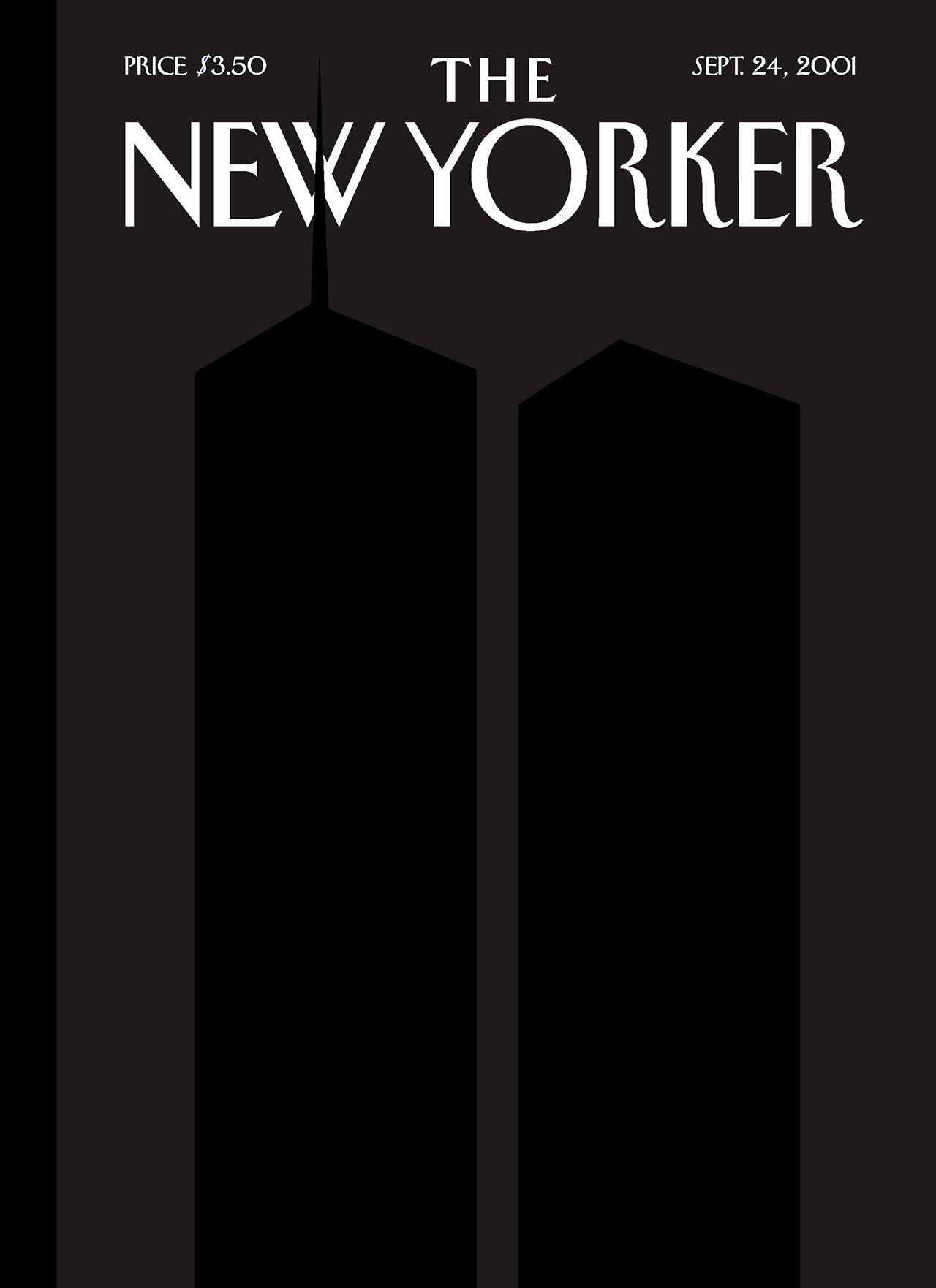Covering 9/11
Covering 9/11
- Grades 6 to 12
- Lesson Duration: One class period
- Theme: Events of 9/11
Essential Question: How can art convey meaning in the immediate aftermath of a tragic event?
Learning Goals
Students will analyze and interpret the cover of the issue of The New Yorker magazine published immediately following 9/11.
Students will consider different perspectives of covering a tragic event and evaluate the decision made by The New Yorker after 9/11.
Vocabulary
The New Yorker magazine: This weekly publication provides reporting and commentary on politics, foreign affairs, business, technology, popular culture, and the arts, along with humor, fiction, poetry, and cartoons.
The Atlantic: This media company covers news, politics, culture, technology, health, and more through its articles, podcasts, videos, and flagship magazine.

"9/11/01," 2001, Art Spiegelman and Françoise Mouly, Courtesy of The New Yorker © Condé Nast
Activity
-
Display or distribute copies of The New Yorker cover titled “9/11/2001.”
-
Ask students to look at the cover and write down observations about shapes, colors, textures, and the position of objects. Click on the image to use the pinch and zoom feature for closer viewing.
-
Conduct a guided inquiry using the following questions:
- What do you notice on this cover? What else do you see?
- Why do you think this color choice was made? What makes you say that?
- How does the use of color convey the mood? What makes you say that?
- When was this cover published?
-
Summarize student observations. Ask students: Based on the historical context, what do you think the artist is trying to convey through the cover? What makes you say that?
-
Tell students that the cover was created by Françoise Mouly, the art editor of The New Yorker since 1993 and her husband, Art Spiegelman, the cartoonist best known for the graphic memoir Maus. Share the following excerpt from the September 11, 2013, Atlantic article entitled “The Uncredited Collaboration Behind The New Yorker's Iconic 9/11 Cover.” Share the following quote by Françoise Mouly that details the story behind the iconic, all-black New Yorker cover showing a silhouette of the Twin Towers:
… I felt that images were suddenly powerless to help us understand what had happened. The only appropriate solution seemed to be to publish no cover image at all—an all-black cover. Then Art suggested adding the outlines of the two towers, black on black. So from no cover came a perfect image, which conveyed something about the unbearable loss of life, the sudden absence in our skyline, the abrupt tear in the fabric of reality.
-
Compare the interpretations made by students to that of Françoise Mouly by referencing their observations that connect to the quote. Share the following excerpt from the September 11, 2013, Atlantic article entitled “The Uncredited Collaboration Behind The New Yorker's Iconic 9/11 Cover.” Tell students that the editor of The New Yorker, David Remnick, said in The Atlantic interview that he considered using a photograph on the cover for the first time in the magazine’s history after the September 11 attacks. He said he thought a photograph may be a “precedent-breaking way to register such an immense historical event.”
-
Divide students in to small groups and ask them to place themselves in the role of David Remnick. What message would you convey through the cover in the aftermath of 9/11? Would you use a photograph or an illustration to convey that message? View examples of photos and other artworks to help guide your decision. See the clips below, view drawings in Inside the Collection, watch additional artist interviews, and explore the September 11 Attack Timeline.